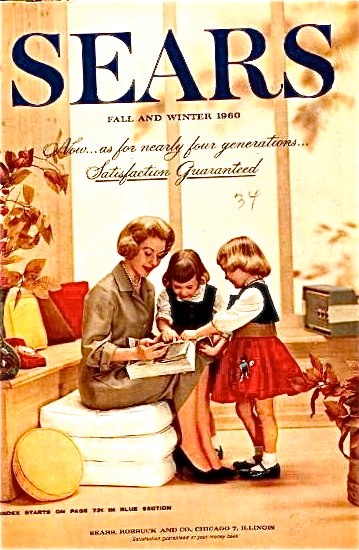From Sears to Amazon
Time changes all things, and a century is a lot of time.
Toilet paper is a good example. One hundred years ago, RFD or Rural Free Delivery was the primary source of this necessity.
In those days, the horse was the primary source of transportation. For the millions of citizens who did not live within easy walking distance of stores, mail order was the preferred source of anything that could not be grown or produced at home.
The bi-weekly or monthly trips to town by buggy or wagon was to get necessities like sugar and salt and, on occasion, a pair of shoes.

Everything else was dependent on two humongous “mail order houses” in Illinois and Iowa. Sears & Roebuck and Montgomery Ward had huge warehouses stocked with everything imaginable, other than perishable items like food. Home construction kits including two story models were even available from Sears.
These two giants reached their customers through glossy, colorful catalogs. Each mailed their customers three catalogs a year. The spring and fall versions were about two inches thick with the Christmas catalogs being much smaller.
To buy something from Sears or Wards, you had to fill out an order form by hand, write a check or buy a money order as the handy credit card had not even been dreamed of, and trudge to the snail mail box to get the order on its way. When the order finally got to its destination, everything about it would be processed by hand, and a package with the ordered items would be put back into the snail mail, or RFD. You could expect to receive your order in about two weeks.
There was, however, a good side effect of this slow process. As soon as a new catalog was received, the old one was retired to the outdoor toilets to replace the corn cobs or whatever was being using as toilet paper. This was in the days before indoor plumbing being common, so there would be no problem with the slick, glossy paper clogging the plumbing.
The end of WWII also signaled the end of Sears’ and Ward’s toilet paper.
When the assembly lines that had been turning out jeeps, trucks, tanks, and all kinds of war machinery began turning out sedans and pickups for private use, there was a dramatic decline in the mail order business. Now Mom could run to the grocery store or clothing store two or three times a day and take her purchases including some soft, clean toilet paper home the same day.
This easy and popular brick and mortar shopping seemed to be the death knell of the mail order business. Sears and Wards closed their mail order operations and morphed into brick and mortar businesses all over the country.
Then, in this century, something called the Internet exploded into everyone’s hands, including toddlers. There was no longer a need for snail mail, as communications could be placed in the hands of recipients immediately.
Jeffrey Preston Bezos, an American internet and aerospace entrepreneur, recognized the potential of the internet and founded Amazon, an internet version of the old mail order business.
The Amazon catalog is on the internet. Just type in what you are looking for and your computer screen will be filled with countless versions of what you are looking for. Just pick what you want, click it to your cart, put in your credit card number, hit send and the item will be at your door the next day or, in some cases, a day or two.
On the Amazon website, there are pages of toilet paper descriptions. Some are available in boxes of 80 rolls. That should last you through at least three or four Sears and Wards catalogs.
So here’s the perspective.
Time does change everything. Just look at what it did to toilet paper.
As historical footnotes, Sears and Wards also did not last as brick and mortar businesses.
In 2005, Sears was bought by the American big box chain Kmart.
In 2008 the "Montgomery Ward" brand was acquired by a subsidiary of The Swiss Colony, Inc. (now known as Colony Brands, Inc.), a family-owned direct-mail business that strives to continue the heritage, traditions and values of the brand that were inspired by the founder, Aaron Montgomery Ward. In 2005, Sears was bought by the American big box chain Kmart,
enough





